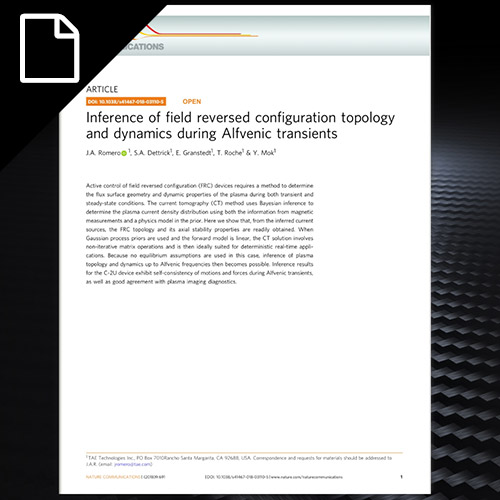
Feb 2018 | Research Library, Papers, Experiment, Featured Publications, Fusion Energy, Fusion Research, Fusion Science, Fusion Technology, Instabilities, Plasma Profiles, Plasma Research, Stability
February 2018 | J.A. Romero | Nature Communications | Paper
Active control of field reversed configuration (FRC) devices requires a method to determine the flux surface geometry and dynamic properties of the plasma during both transient and steady-state conditions.
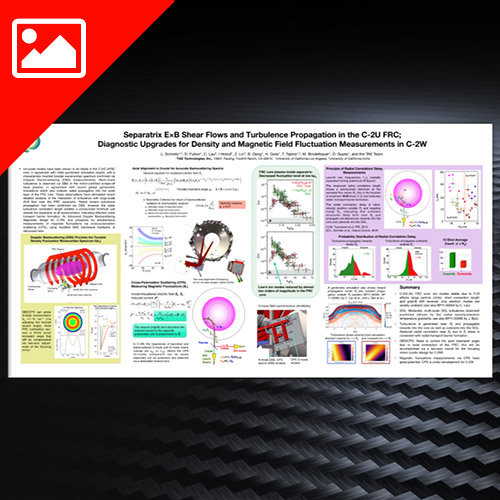
Oct 2017 | Research Library, Posters, Diagnostics, Experiment, Fusion Energy, Fusion Research, Fusion Science, Fusion Technology, Plasma Profiles, Plasma Research, Turbulence
October 2017 | L. Schmitz | APS-DPP | Poster
Ion-scale modes have been shown to be stable in the C-2/C-2FRC core, in agreement with initial gyrokinetic simulation results, with a characteristic inverted toroidal wavenumber spectrum confirmed via Doppler Backscattering (DBS) measurements.
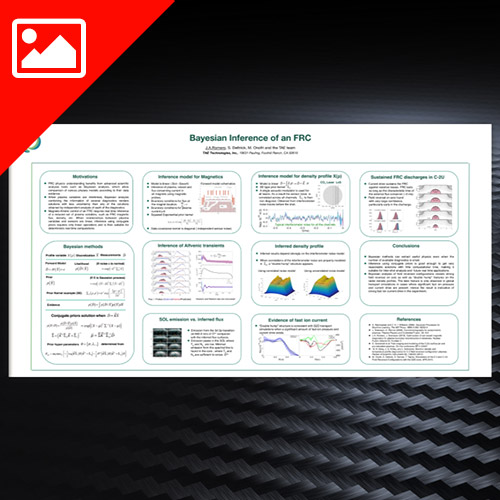
Oct 2017 | Research Library, Posters, Equilibrium, Experiment, Fusion Energy, Fusion Research, Fusion Science, Fusion Technology, Plasma Profiles, Plasma Research
October 2017 | J.A. Romero | APS-DPP | Poster
FRC physics understanding benefits from advanced scientific analysis tools such as Bayesian analysis, which allow comparison of various physics models according to their data evidence.
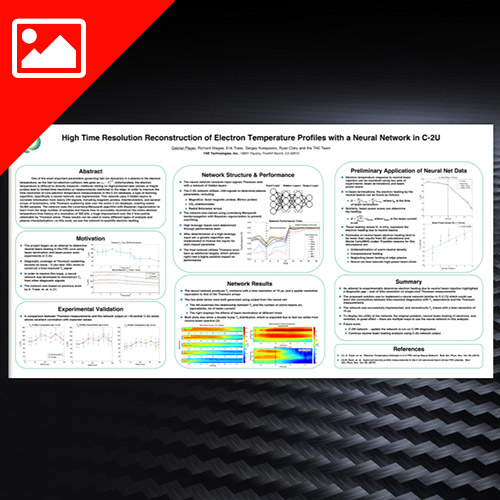
Oct 2017 | Research Library, Posters, Diagnostics, Experiment, Fusion Energy, Fusion Research, Fusion Science, Fusion Technology, Plasma Profiles, Plasma Research
October 2017 | Gabriel Player | APS-DPP | Poster
An attempt to experimentally determine electron heating due to neutral beam injection highlighted a diagnostic gap – lack of time resolution on single-shot Thomson measurements.
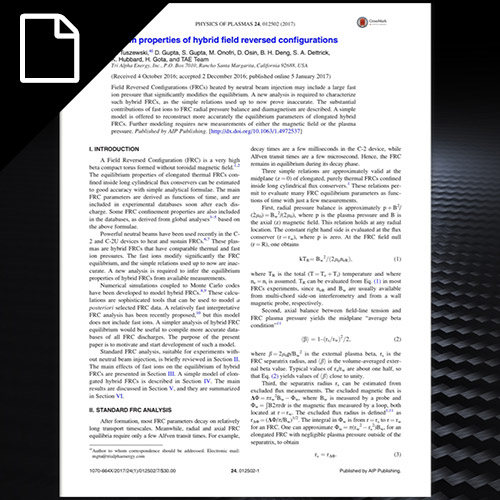
Jan 2017 | Research Library, Papers, Confinement, Equilibrium, Experiment, Fast Particles, Fusion Energy, Fusion Research, Fusion Science, Fusion Technology, Top Level
January 2017 | M. Tuszewski | Physics of Plasma | Paper
Field Reversed Configurations (FRCs) heated by neutral beam injection may include a large fast ion pressure that significantly modifies the equilibrium. A new analysis is required to characterize such hybrid FRCs, as the simple relations used up to now prove inaccurate.




